When students start school, they are assessed to determine their understanding and knowledge about numbers. This includes counting forwards and backwards, reading numerals, sequencing, and subitising. When faced with a number problem, such as 5+4, students use objects to form a set of 5 and a set of 4 and then count every object to answer the question. Subitising gives students the ability to ‘see’ the sets in their head and join them. This is a more efficient and faster method.
Three-in-a-Row is a fun and competitive game, designed to provide students with opportunities to subitise.
The Game
Three-in-a-Row, is very similar to the traditional game Connect Four. Instead of a doubled sided standing board with columns and plastic-coloured disks, students have a flat game board with coloured counters. On the Three-in-a-Row game board there are pictures of the different sides of a traditional dice. These are placed in a grid formation.
Students take turns rolling the dice. They say the number they rolled and then place their counter on the same dice picture on the board. As the game progresses, students try to place counters to form a horizontal or vertical line of three. The student first to do this is the winner. When this happens, the board is cleared and the players start a new game.
It’s easy to find the right picture on the board because it looks the same as the dice.
New Game - Numeral to Spots
Once students could instantly identify the same spot patterns on their dice as on their game board, they moved onto a numeral dice. Instead of spots, these dice had the numerals 1 to 6. Students had to be able to recognise and say the numeral on the dice and then transfer this to a dice spot pattern on their game board.
Sometimes it’s really hard to get three counters in a row!
The next step for these students is to apply this skill with simple number problems. When students trust in their ability to instantly know how many objects there are in a set and can visualise it, they are often better able to manipulate the objects and work out the answer in their mind.
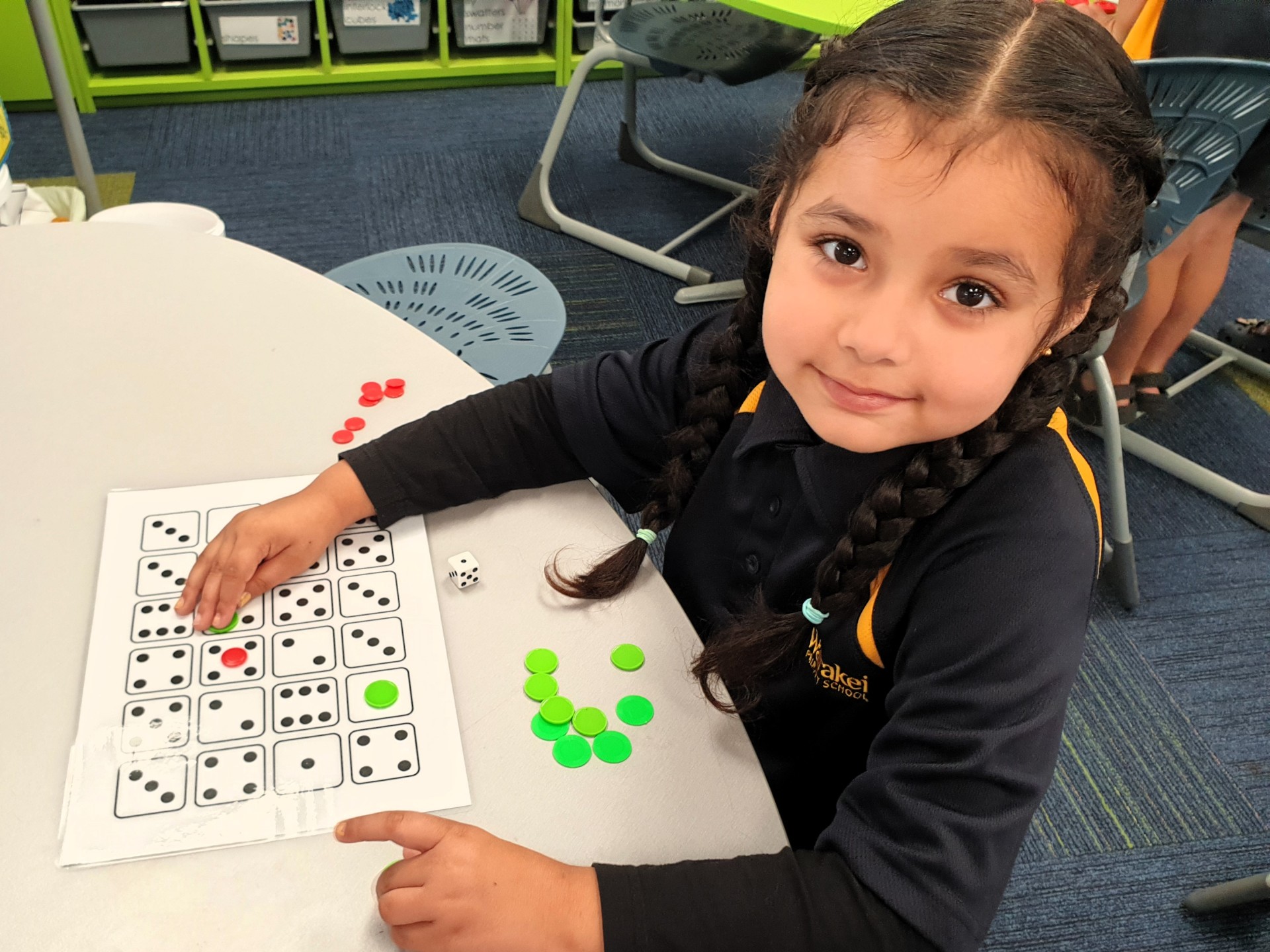
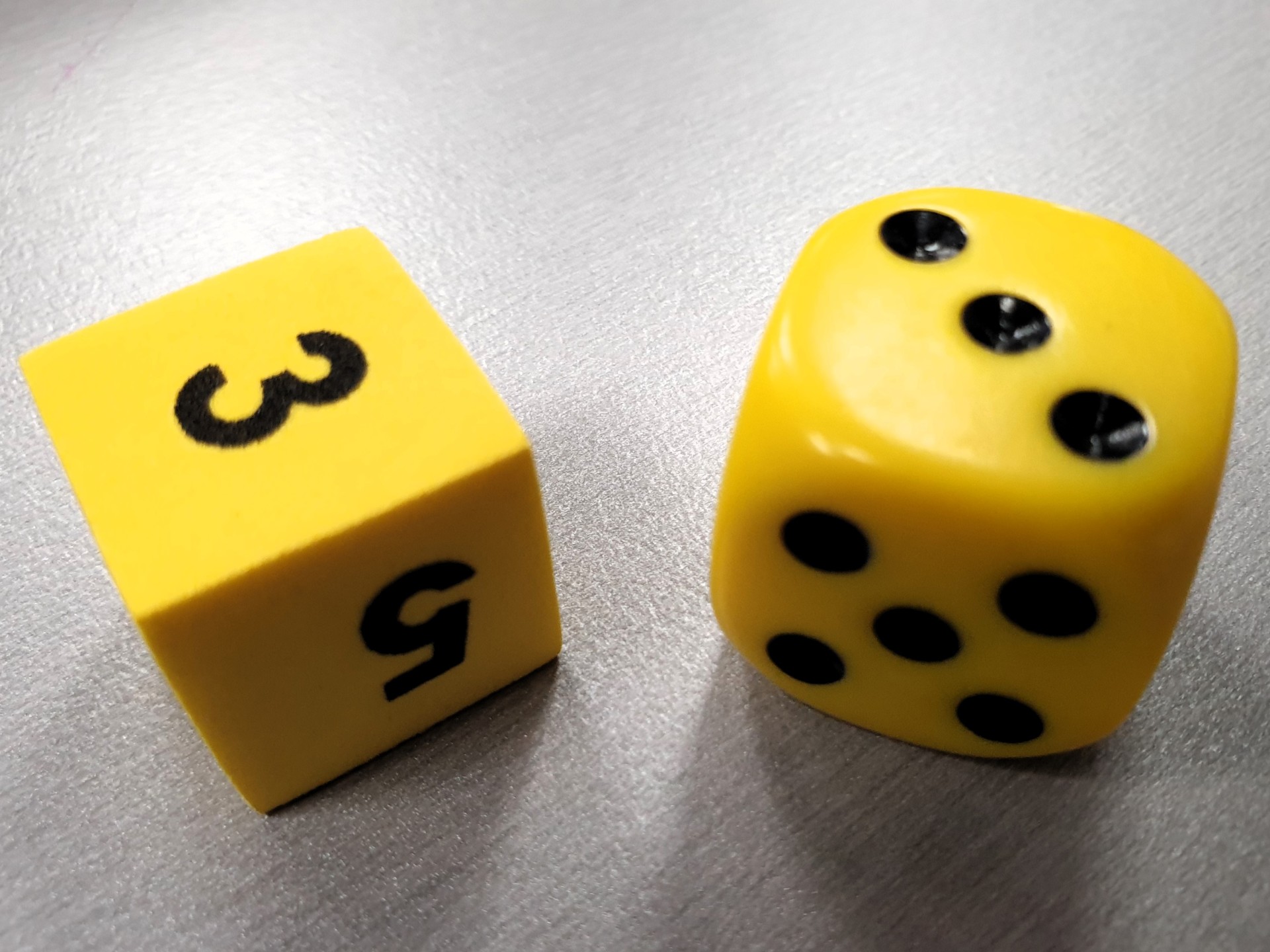
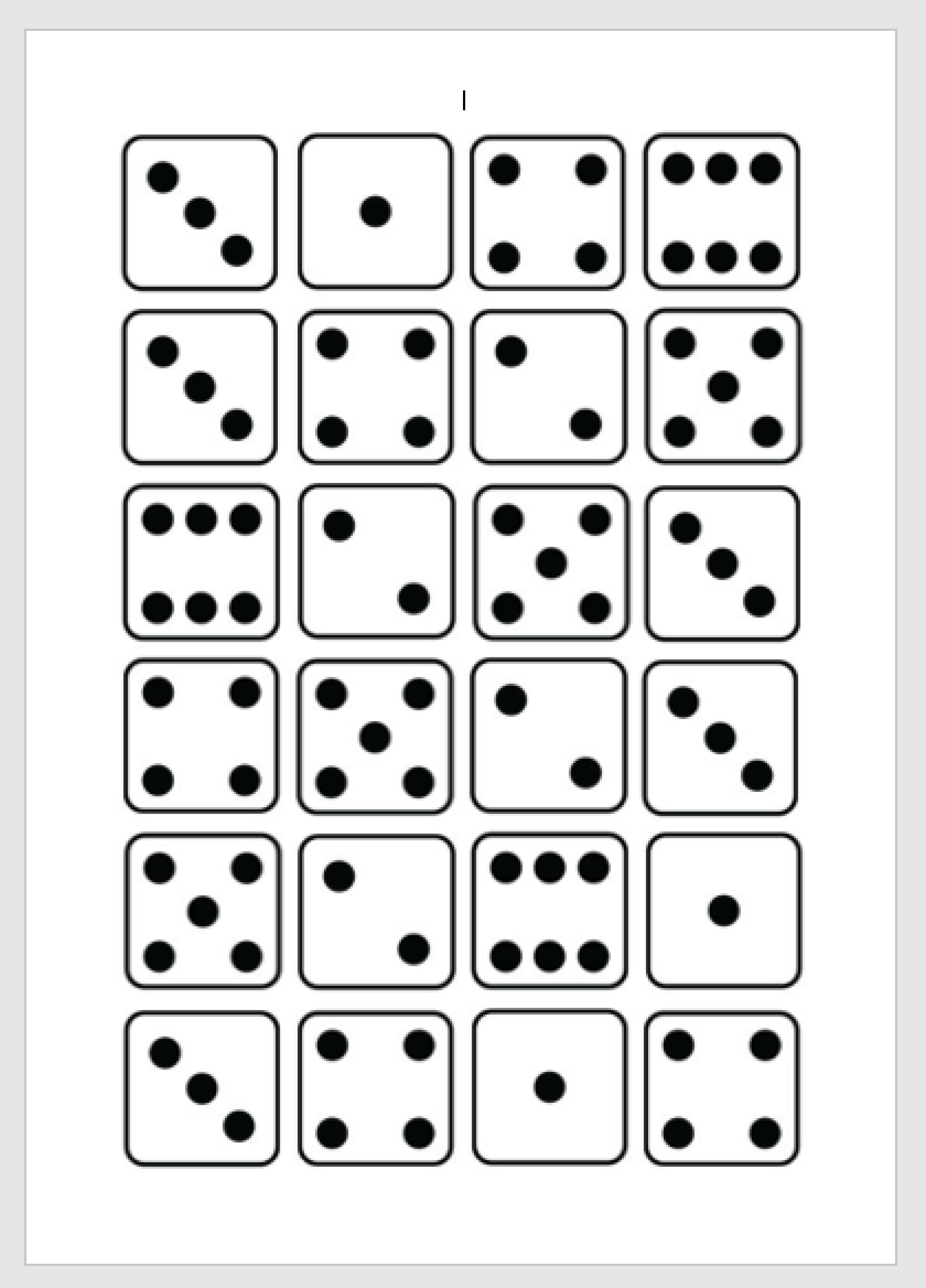
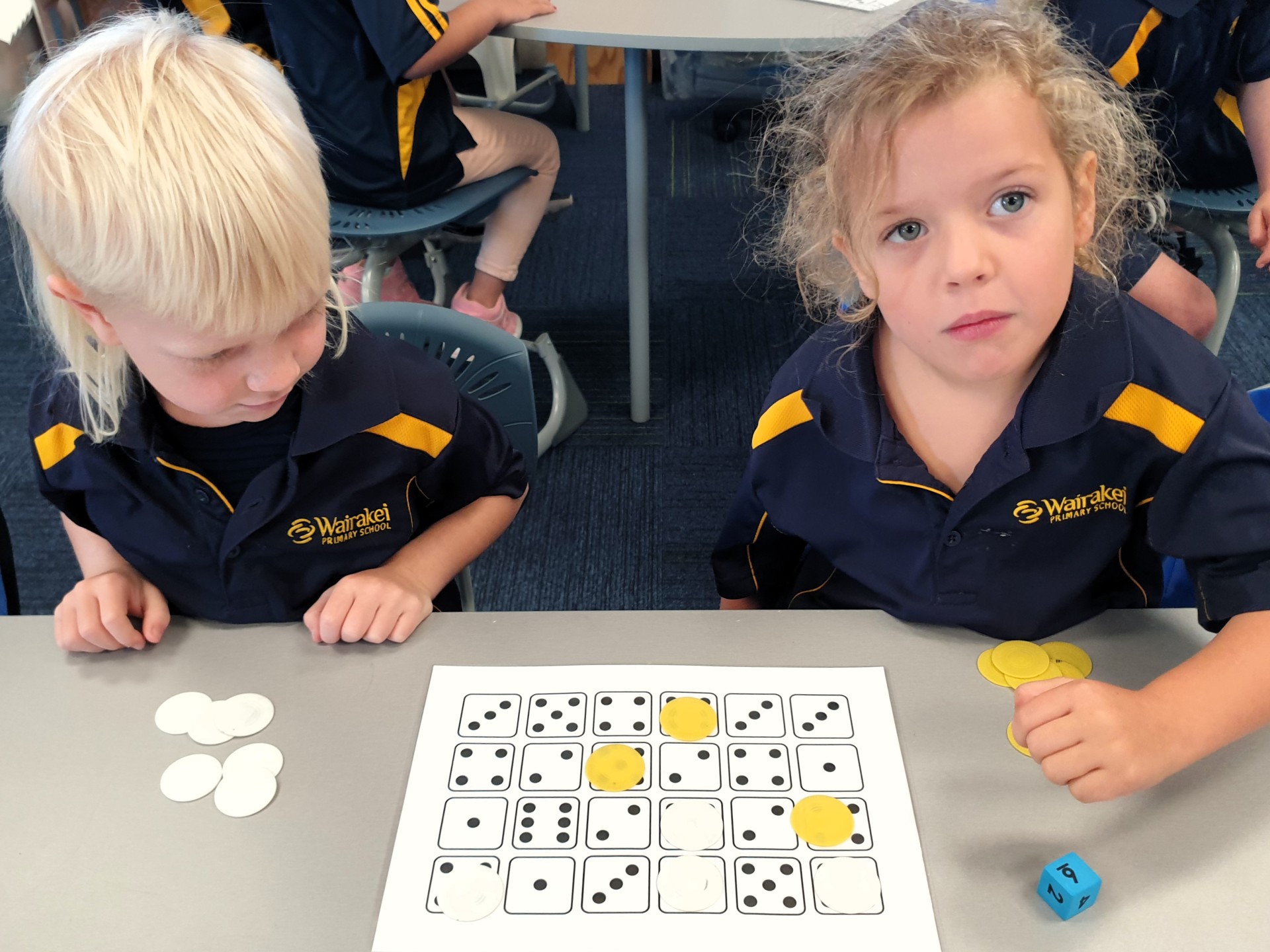
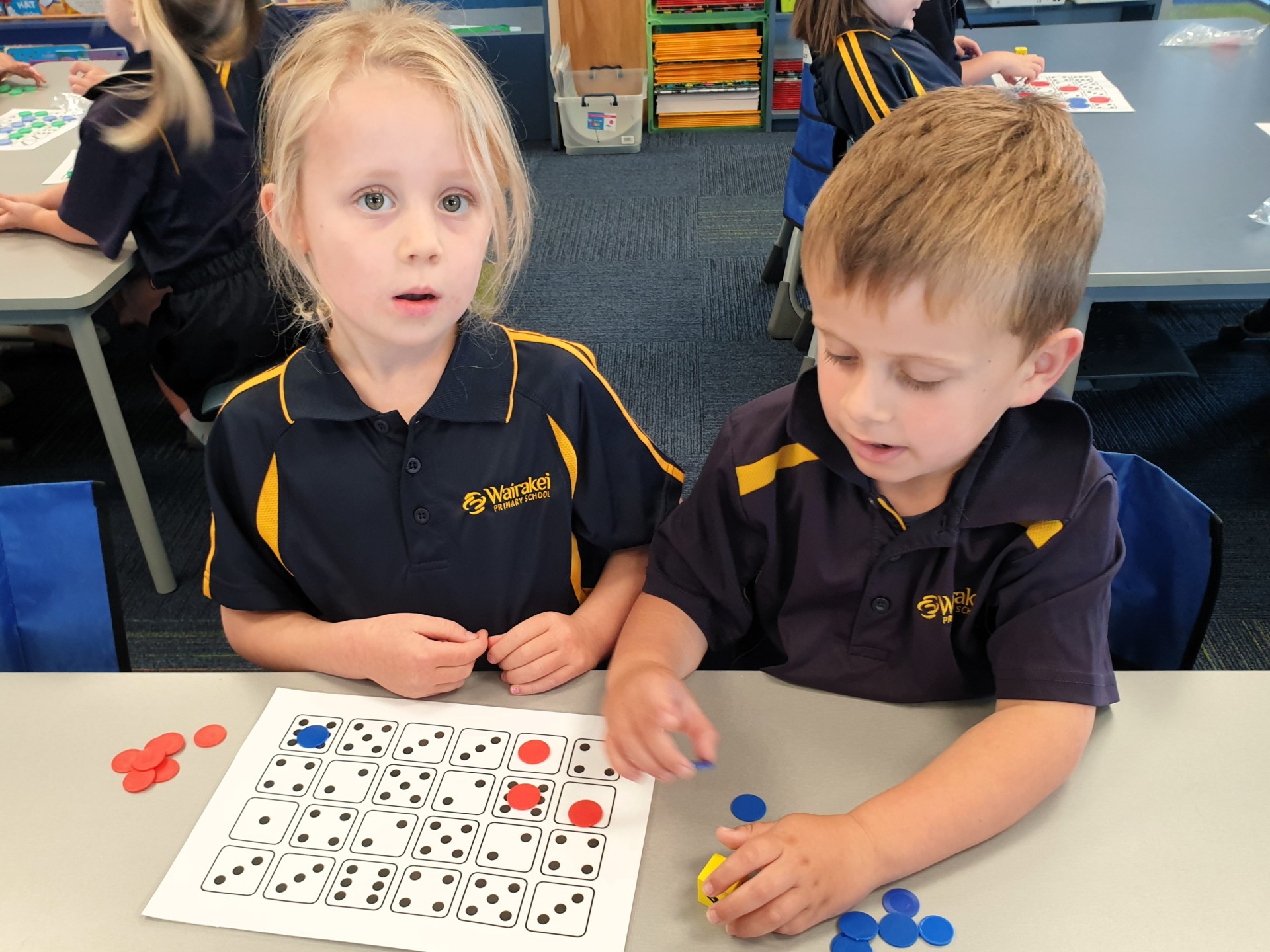
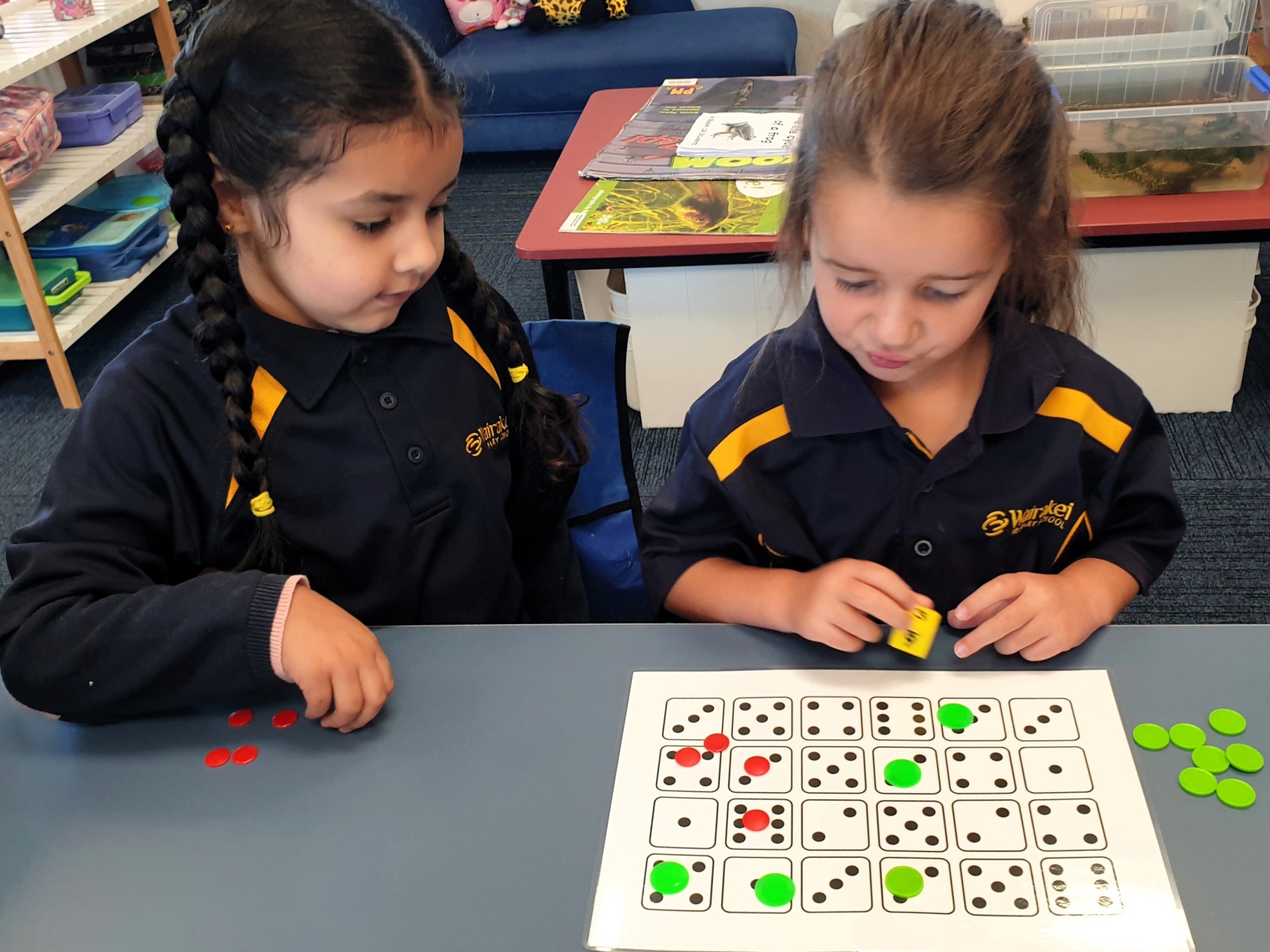
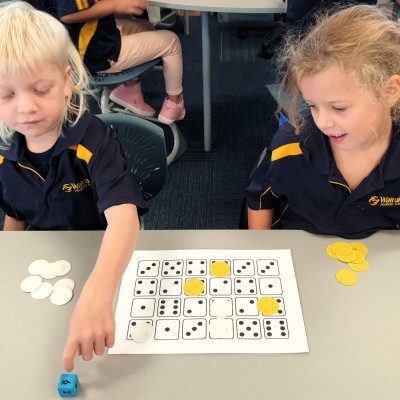
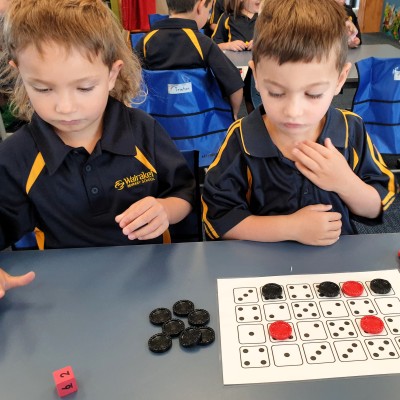
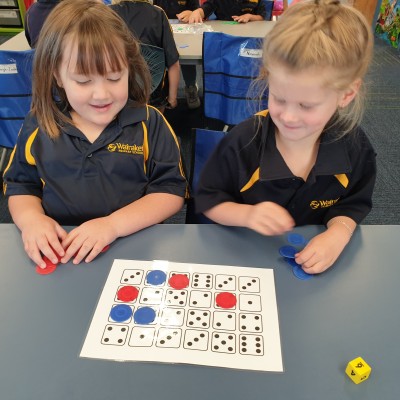
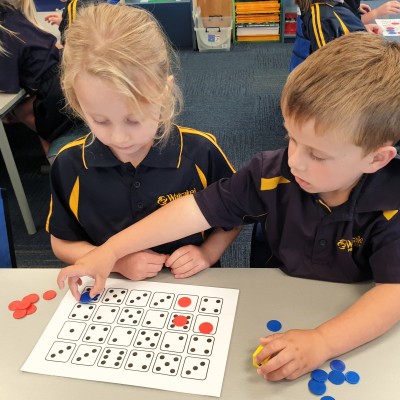
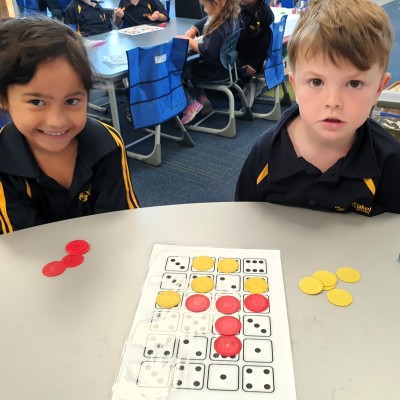
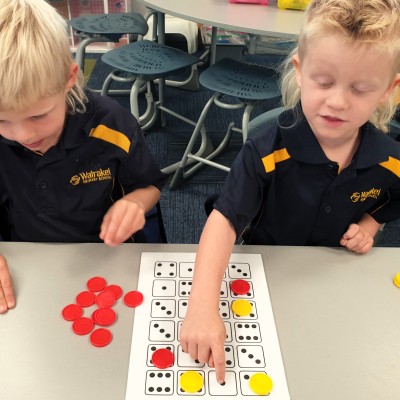
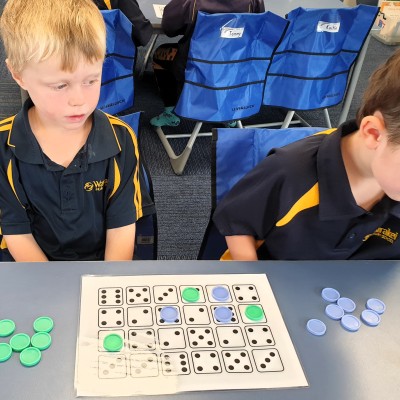
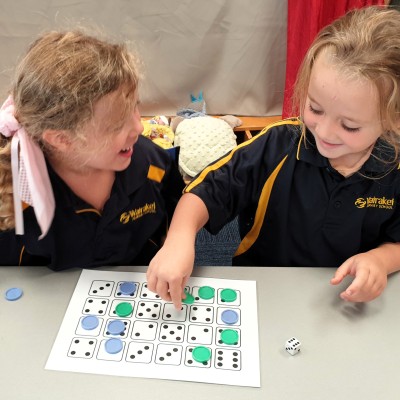
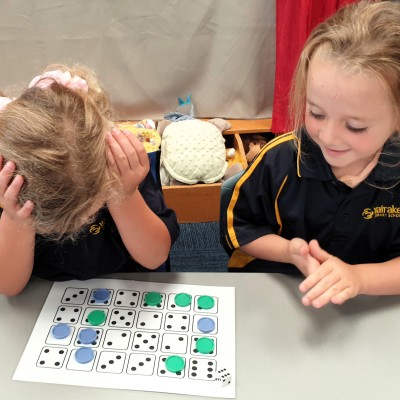
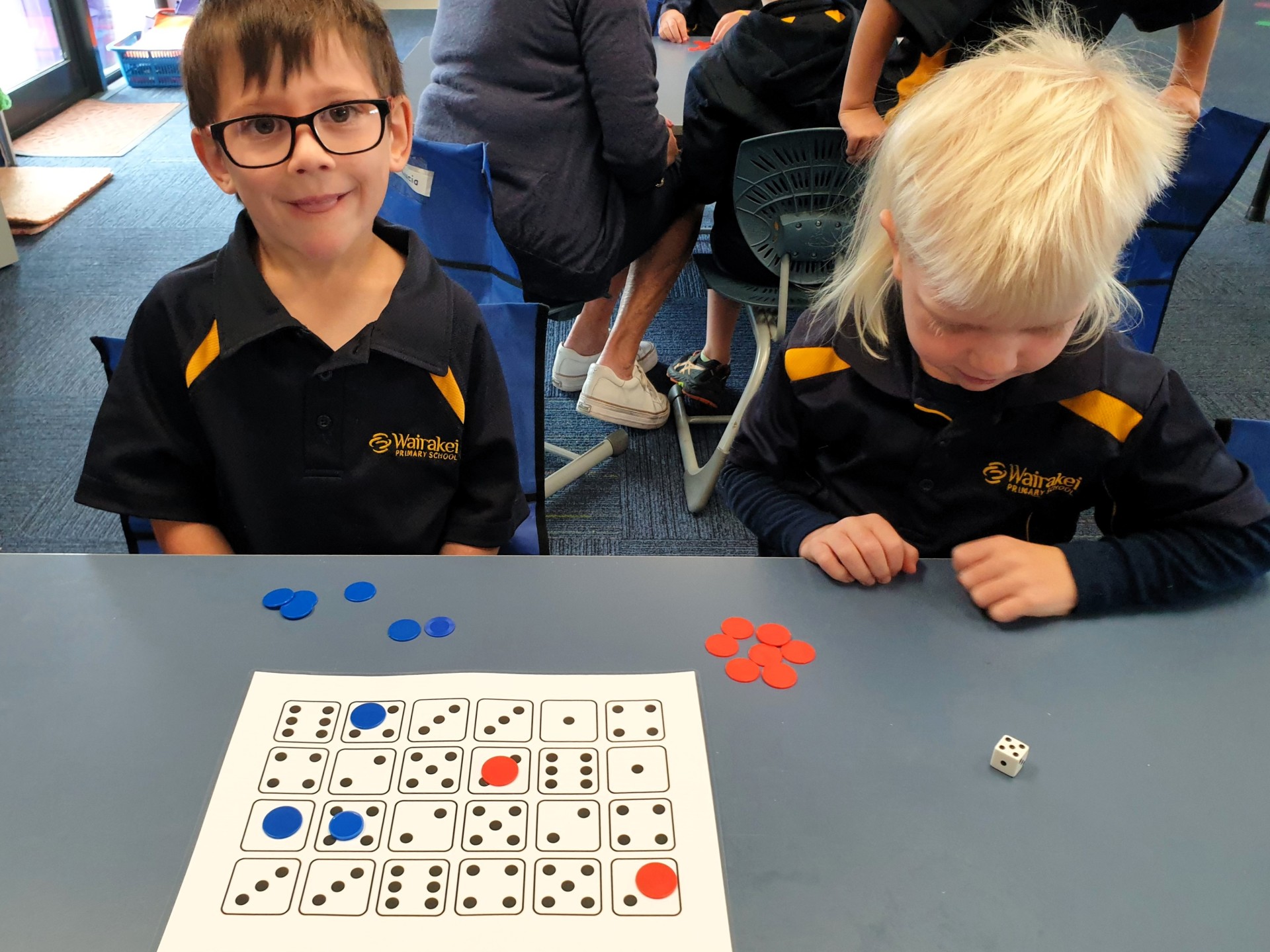


Comments
No one has commented on this post yet.